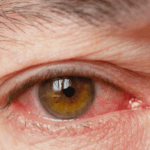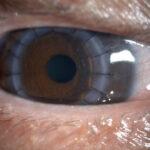Does someone you know have glaucoma? It is the leading cause of irreversible blindness in the world. It affects the optic nerve, the nerve that carries visual information from your eye to your brain so that you can see. It is also a multifactorial and complex disease with specific characteristics of optic nerve damage and visual field loss.
Glaucoma and Intraocular Pressure (IOP)
Intraocular pressure is the only modifiable risk factor for this disease. Intraocular pressure (IOP) is measured with a tonometer during an eye examination. A normal intraocular pressure (IOP) is between 10-21mmHg. Although high intraocular pressure has been established as the strongest risk factor, there is no specific level of elevated eye pressure that definitely leads to glaucoma. On the contrary, there is no lower level of IOP that will absolutely eliminate a person’s risk of developing this disease. However, for specific individuals vision loss can occur when the intraocular pressure (IOP) is high (James Tsai, Glaucoma Research Foundation 2017). A person with elevated intraocular pressure is referred to as a ‘glaucoma suspect’. The term ‘glaucoma suspect’ is also used to define those patients with other risk factors such as positive family history of glaucoma or history of steroid use. Clinical risk factors include an asymmetry or cupping of the optic disc, having thin corneas with a central corneal thickness of less than 555 microns and high myopia or short-sightedness.
Early Detection
There are two types of glaucoma which are open-angle or angle-closure. Angle-closure glaucoma is more common among Asians. Patients with acute angle-closure will present to the clinic with painful red eyes, headache and periocular pain. This is also accompanied with nausea, vomiting and sudden blurring of vision. Acute-angle closure is a serious and often sudden condition that would require urgent referral to an Ophthalmologist. In open-angle glaucoma, damage to the vision tends to progress slowly over years and can ‘sneak up’ on an individual before they realize their vision is no longer normal. If you are above the age of 55, it is a good idea to see an eye doctor regularly so that it can be detected and treated early.






